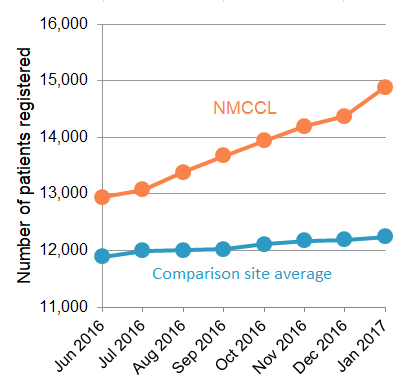The Office of Evaluation Sciences at the General Services Administration makes government work better for citizens. This is the first part of a two-part discussion about how their work improves the federal customer experience.
Shannon currently sees her doctor at the Naval Medical Center Camp Lejeune. Keeping track of her communications with her doctor, making sure she doesn’t miss important lab results or messages about her care, is one more thing to do on top of her full time job as a Marine Logistics/Mobility Chief and mom of three.
Military healthcare clinics provide secure online messaging to allow patients like Shannon to communicate with providers, get lab results, and renew prescriptions, but many patients haven’t enrolled yet in the messaging system. Why not? The customer experience field explores the potential barriers behind what may prevent someone from signing up for a service like the messaging system and how to encourage customer action. How we communicate with people about available services and benefits matters. Designing experiences that enable individuals to access federal services intuitively is part of what the broader federal customer experience movement is about.
One approach to that work comes from the Office of Evaluation Sciences (OES), an interdisciplinary team based at the General Services Administration (GSA). OES draws on evidence-based insights from social and behavioral science disciplines like psychology and economics.
Working with federal agency collaborators, OES proposes and evaluates program changes that incorporate these evidence-based insights, often to improve the federal customer experience. Program changes can be as small as modifying the wording in a reminder letter, but are intended to address agency priorities by improving the likelihood that people complete forms, apply for programs, or submit required documentation. In this case, the Defense Health Agency (DHA) wanted it to be easier for Shannon to connect with her doctor, but it was important to let Shannon know that the secure messaging service existed and make the enrollment process as frictionless as possible.
In 2017, OES and DHA designed an improved approach to inform patients like Shannon about the secure messaging service and make it easier for them to enroll. The approach had three components: providers made a personal appeal about registration during patient visits, on-site staff assisted patients with signup, and staff gave a checkout sheet to patients with registration instructions to complete later.
OES aims to not only apply evidence-based insights, but also to evaluate the impact of these changes. In our DHA example, OES compared patient messaging registration at the Naval Medical Center Camp Lejeune Family Medicine Clinic, which implemented OES recommended changes, to registration at seven similar military treatment facilities (see Figure 1). Registrations were five times higher at Camp Lejeune, suggesting that we had correctly identified bottlenecks to patients enrolling in secure messaging.



